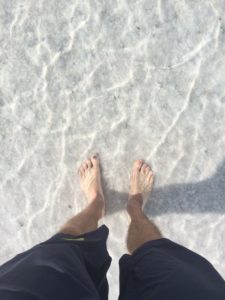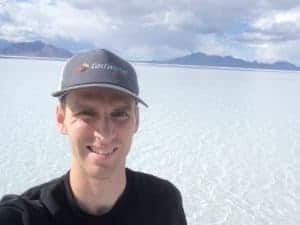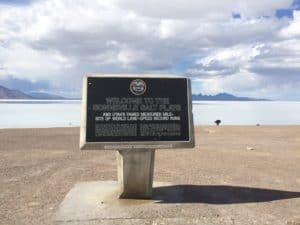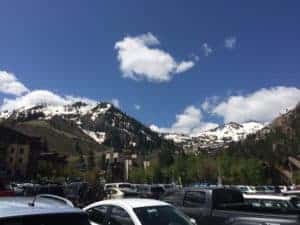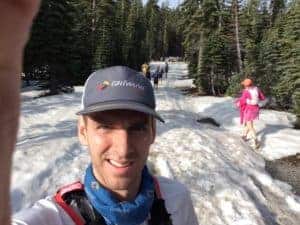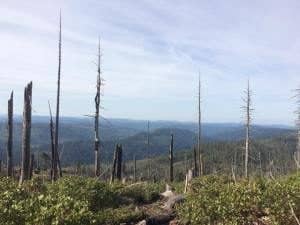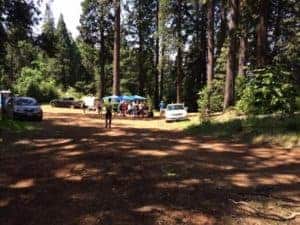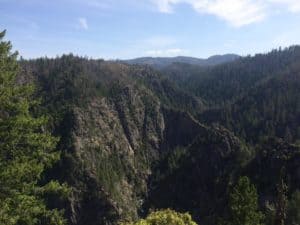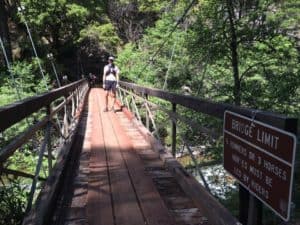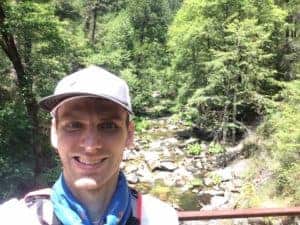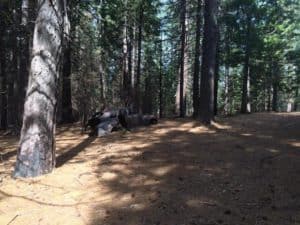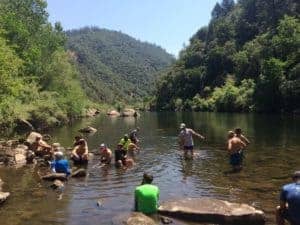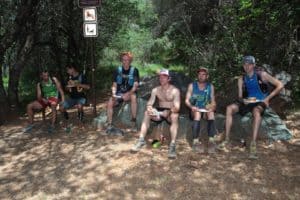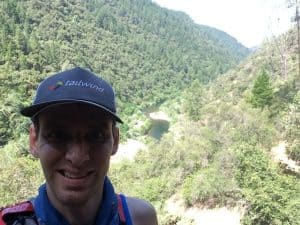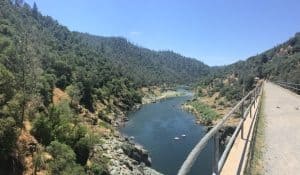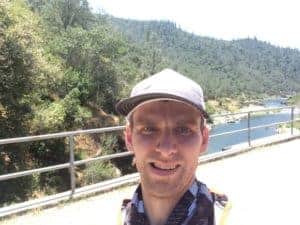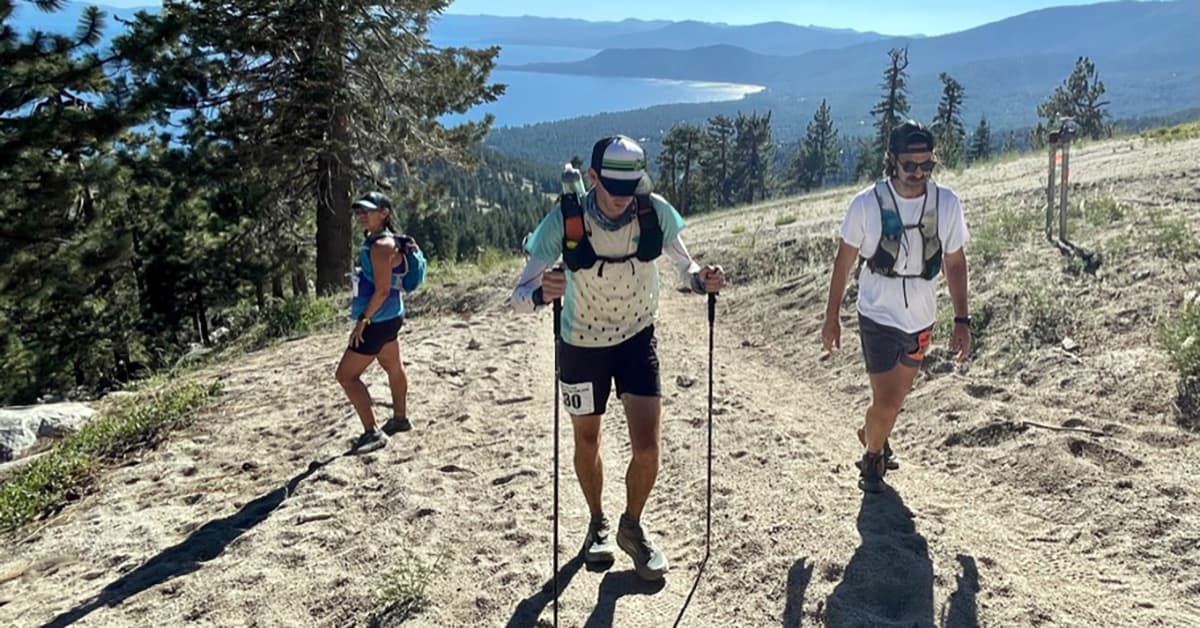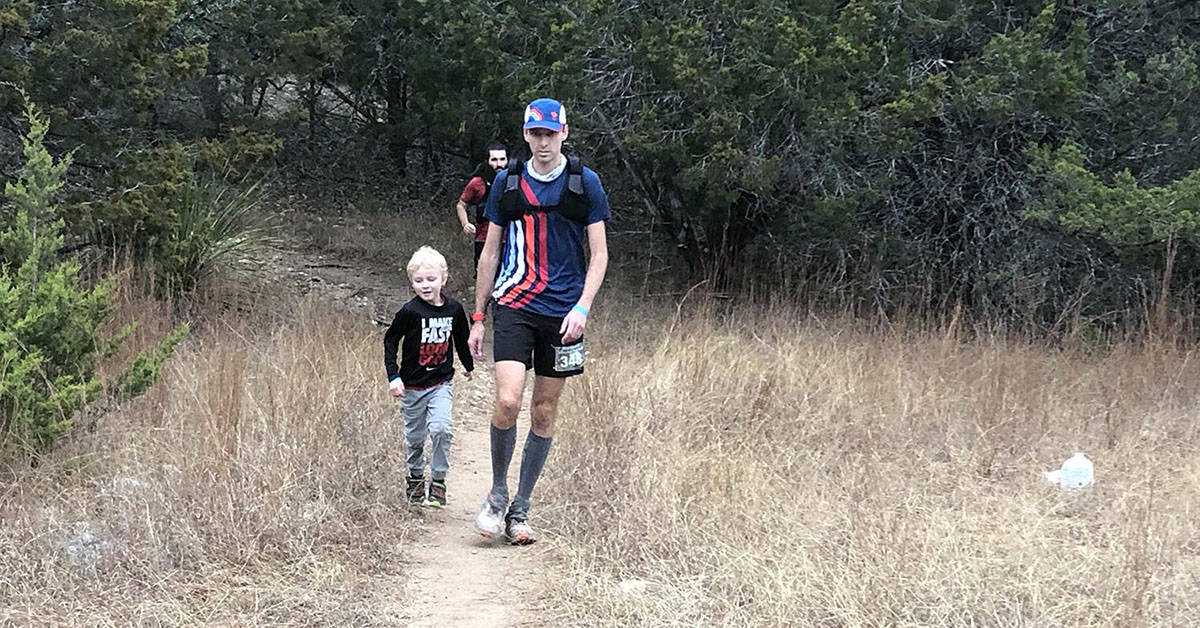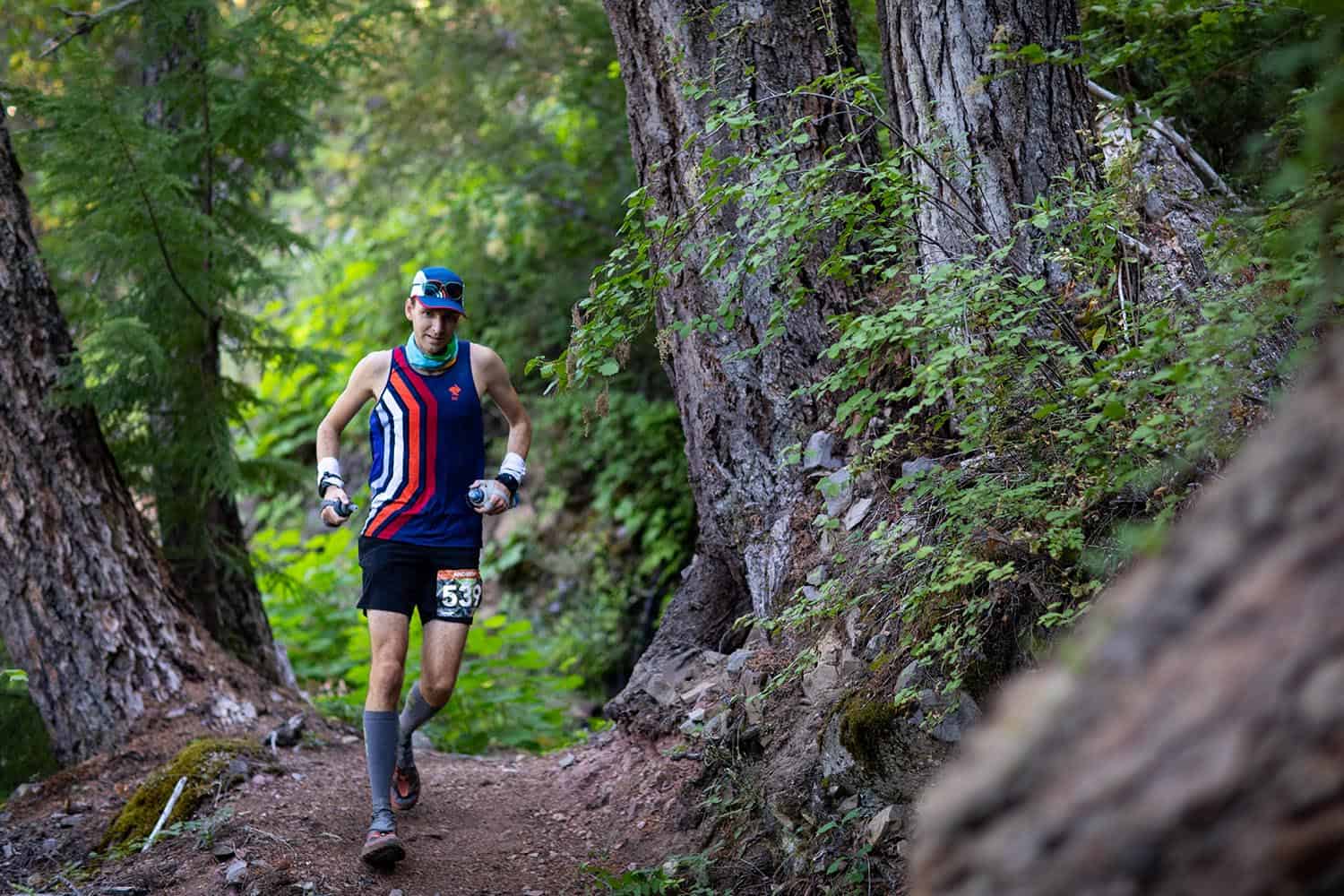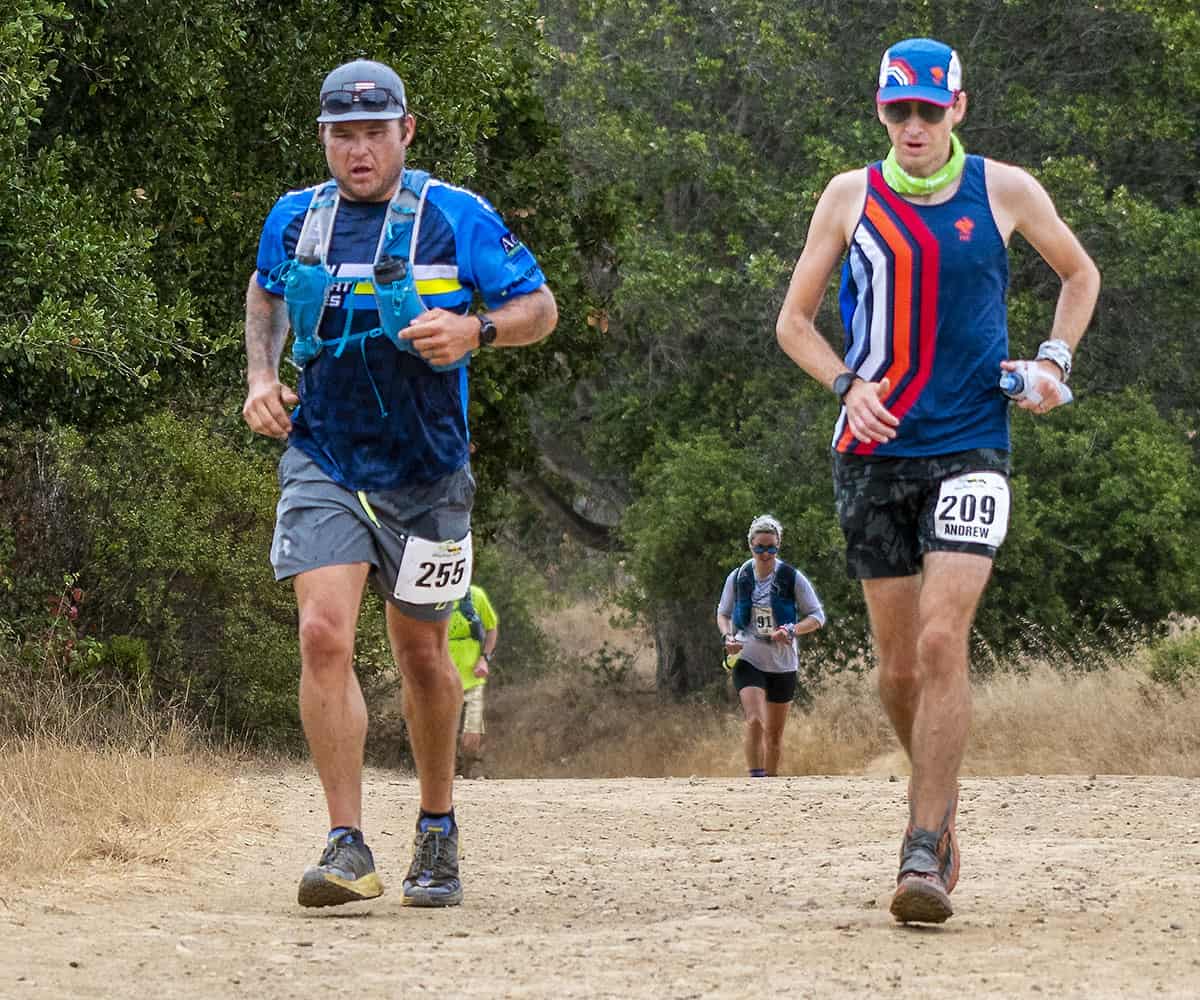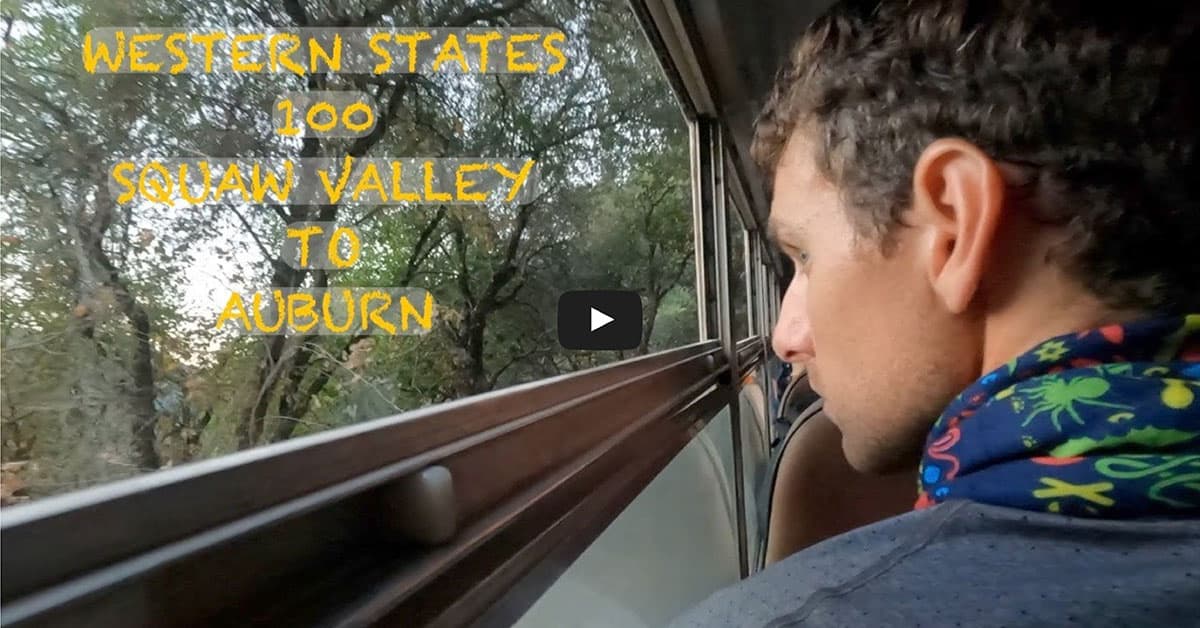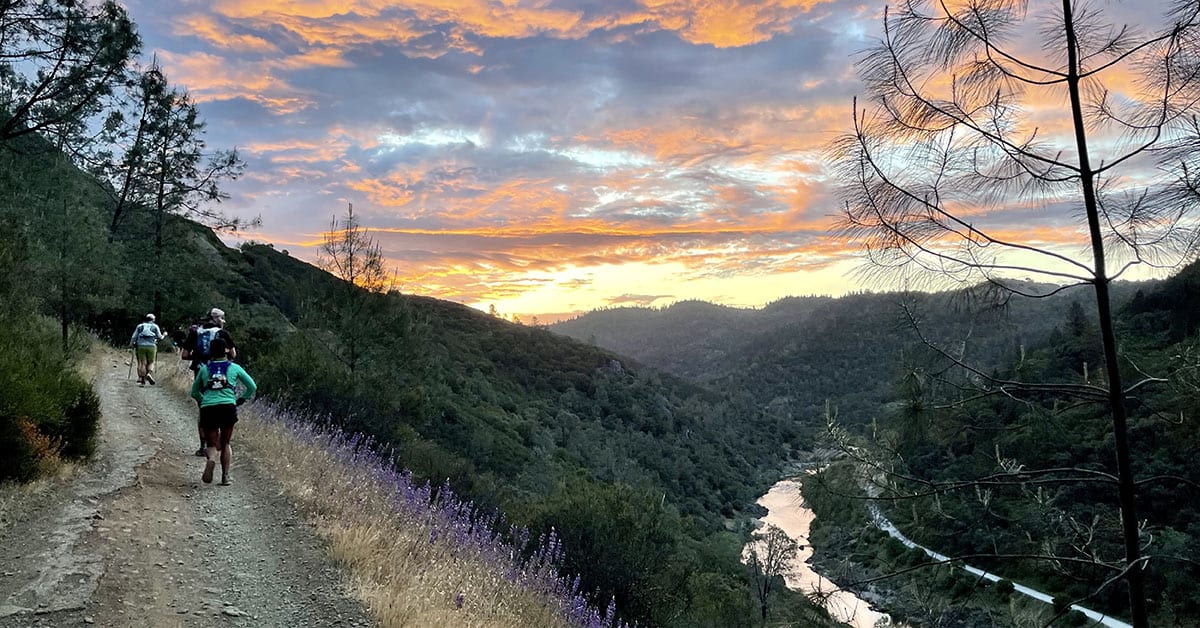Cross Country Drive & Western States 100 Training Camp
Every year the Western States 100 Mile Endurance Run organizes a three-day training camp over Memorial Day weekend. Runners come from all over the world to cover the last 70 miles of the course. Other than an abbreviated list of aid stations and course markings the weekend was run just like the race. The Western States 100 Training Camp would be my longest training block leading into the race later in June.
My adventure towards the training camp started four days before the weekend began. I drove my car cross-country from Charleston, SC to Modesto, CA. packed with everything I needed for running, boxes of clothes, and my bike on the roof. On Tuesday, I drove just under 900 miles to reach a point west of St. Louis. On Wednesday, I awoke early to drive another 860 miles to reach Fort Collins, CO. The stop was not along the fastest route, but it allowed me to catch with a childhood friend, Ryan. I had not seen him since my wedding nearly five years ago. Ryan and I enjoyed catching up over dinner and drinks before calling it a night.
After back to back 12+ hour days of driving, the next two days would be slightly shorter in duration. For Thursday, I needed to reach Elko, NV (685 miles away). This drive consisted of going across southern Wyoming, through Salt Lake City and the Booneville Salt Flats home of many land speed records.
On Friday, I would finally arrive in the Auburn, CA area. Before that though, I made a brief stop off at Squaw Valley. Squaw is the official starting point of the Western States 100 Mile Endurance Run. It was also the site of the 1960 Winter Olympics. The Squaw Valley Resort is your typical ski resort area with restaurants, shops, and lodging scatter at the base of the mountain. Upon starting WS100, participants climb nearly 2500 feet over 4-miles. Then they begin the long descent to the finish line in Auburn. I originally had planned on hiking this opening section today. However, the resort was still open for skiing on the upper slopes through the Memorial Day weekend. Instead, I ate lunch at Soupa Sandwich & Soups in the village at the base of the slopes. Then, returned to my car for 45 minutes of driving to reach Auburn.
Arriving in Auburn, I checked into my hotel for the next few days; then I headed out for a visit to the Auburn Running Company. Upon arrival at the store, I found out that later that evening Hoka One One athlete’s Paul Terranova and Magdalena Boulet would be on-hand for a Q&A and the showing of a few Hoka short films. With a few hours before this would happen, I walked around town to stretch my legs. I made my way over to the Placer High Track where runners finish WS100. Then, I grabbed a Southwest Bison Burger and Fries from a local bar restaurant. It was a great evening socializing and listening to experiences from both Paul and Magda. Afterward, it was time for sleep before what was going to be an exciting, but tough next three days. (Read an excellent review on the Hoka Bondi 5)
The Western States 100 Training Camp – Day 1 – Robinson Flat (29.7) to Foresthill (62)
Day 1 of the Western States 100 Training Camp required a 30-minute drive from the hotel to Foresthill. After checking in with WS100 officials, I was loaded onto a school bus with all the other participants. It would an hour along mountain roads to reach Robinson Flat.
The Robinson Flat aid station is 29.7 miles into WS100. By the time runners reach this point, they will have experienced two long climbs and descents. Finally, we arrived at Robinson Flat. There were a couple of feet of snow still covering much of the trail. As we unloaded, many took a moment to get situated and snap a group photo or selfie. I too, took the same moment to make some yellow snow, snap a selfie, and started down the trail.
There was snow on the ground for the first mile as we climbed Little Bald Mountain. No one was 100 percent sure where the trail was, so the going was slow. No one seemed to mind, considering we had 32.3 miles to go for the day. Reaching the top of Little Bald Mountain the snow quickly disappeared as we began to descend towards Deadwood Canyon. Over the next nearly 15 miles, the course went downhill approximately 4324 feet or almost 300 feet per mile. Only a few aid stations were set up today, and the first would be not until mile 8.7. The course at this point was a mixture of single track and old fire/mining roads. At the Dusty Corners aid station, I took a moment to refill the water and Tailwind. Then, I continued on down the fire roads.
Just over 90 minutes into the run, I was feeling good. I was staying hydrated as well, working my way through my second bottle of Tailwind. The course past the breathtaking view from Pucker Point and continued towards Last Chance. The Last Chance aid station was a mining ghost town. This area marked the jumping-off point for the section of the course known as ‘’the canyons.’’ I had heard plenty of stories about the canyons at WS100 over the last few years. Now, I was about to experience them firsthand. As I ran along the trail, I kept thinking about how amazing it was that I was finally here. I was running the Western States trail!
The Canyons
The first of the canyons, Deadwood, dropped about 2,000 feet over less than 2 miles. Despite the desire to let the legs fly going downhill, I held back and kept a moderate pace. I worked to limit the impact on my quads, saving them for the next two days. My goal throughout this weekend was twofold. First, finish each day with energy left over. Second, run each difficult section of the trail as close to my projected time for the actual race. Staying conservative on the downhills meant that my nutrition plan would be more realistic. It also meant that my legs would feel more of fatigue than they would on race day.
It was near the end of the Deadwood Canyon switchbacks that my quads began to feel the burn. Next, I reached the famous Swinging Bridge crossing. This bridge burned down and was rebuilt in the year after the American Fire (2013). I took a few moments to take in the sites around me and catch my breath. I knew as soon as I left the bridge, I would climb 1,500 feet out of Deadwood Canyon.
It would only take about a mile of total distance to reach the top. Then it was another short mile to arrive at the Devil’s Thumb aid station, but the going was slow. I could see runners spread out over the switchbacks above me as I went along. I forced myself to focus on putting down water, Tailwind, and a Sweet Potato baby food pouch. In 3 hr 30 min, I had reached Devil’s Thumb (mile 18). The tough climb took nearly 30-minutes, but I was feeling good. As I left the station, I was thinking I could be done with the 32.3 miles in a little over six hours.
For the next four miles, from Devil’s Thumb to El Dorado Creek, the trail would descend again rather steeply over 2,600 feet. As I began this next steep descent, I started having trouble with an upset stomach. I felt that my fluid intake was good to this point. Maybe, I was just rusty from being in the car so much this past week. I slowed my pace of 9:30/mile to about 10:30/mile and sucked on a ginger chew to try to calm my nausea. It was also starting to get warm, and there was less of a breeze in the canyons. As I approached El Dorado Creek, I was happy to see others climbing down the rocks to cool off.
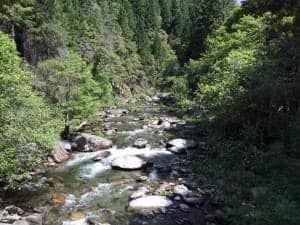 I too made the short side hike to soak my hat, buff, and arm sleeves from the mountain stream. Instantly my body felt cooler and somewhat refreshed. I have been told many times before that even during WS100, it is important to take these few extra seconds to cool off in the streams and take as much ice as possible from the aid stations. Temperatures at the bottom of these canyons can easily reach triple digits. Overheating/dehydration is probably the number one reason people drop from the race.
I too made the short side hike to soak my hat, buff, and arm sleeves from the mountain stream. Instantly my body felt cooler and somewhat refreshed. I have been told many times before that even during WS100, it is important to take these few extra seconds to cool off in the streams and take as much ice as possible from the aid stations. Temperatures at the bottom of these canyons can easily reach triple digits. Overheating/dehydration is probably the number one reason people drop from the race.
Leaving El Dorado Creek, the trail ascended once again up a steep 1,800-foot climb over the next three miles. Based on my climb to Devil’s Thumb, I anticipated that the climb to Michigan Bluff would take an hour. For some reason, this climb took a lot more out of me mentally than I expected.
I felt that I was struggling to climb with any rhythm and strength. My initial thoughts again were that I was just stiff from being in the car so much. However, as the climb dragged on, my mind started to go in the direction of inadequate training. This was only miles 23-25 today, but miles 53-55 on race day. How was I ever to get through this section with another 20+ miles on my legs during the race?
By the time I reached the Michigan Bluff aid station, I was contemplating calling it a day. Just thinking about having to go other 6 miles today, then following that up with two more days of trail running, made me queasy to my stomach. Then I remembered this was not a race. I took my time to the aid station. I found a sit in the shade and sipped on water and ginger ale. Eventually, my stomach allowed me to eat some chips and watermelon.
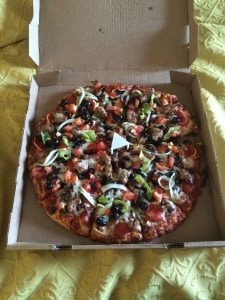
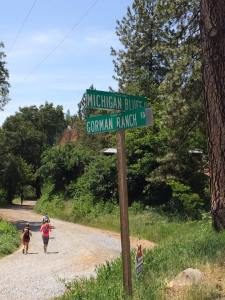 Among the group of volunteers that came out to the Michigan Bluff aid station on this day, there were over 109 WS100 buckles. These people knew what it was like to be on the trail. Many of them reassured me that taking an hour to climb out of El Dorado Creek was realistic. A few commented on keeping that final significant climb in mind when you are pushing the pace down and out of the first canyon (Deadwood). Backing off just slightly more early on would be key to reaching Michigan Bluff with both mental and physical strength.
Among the group of volunteers that came out to the Michigan Bluff aid station on this day, there were over 109 WS100 buckles. These people knew what it was like to be on the trail. Many of them reassured me that taking an hour to climb out of El Dorado Creek was realistic. A few commented on keeping that final significant climb in mind when you are pushing the pace down and out of the first canyon (Deadwood). Backing off just slightly more early on would be key to reaching Michigan Bluff with both mental and physical strength.
After sitting at Michigan Bluff for 20-30 minutes, I started making my way down the trail for the last 6.3 miles. The trail was now rolling fire roads, which made it easy to get the run/walk groove going. I started counting strides to help establish a strong rhythm, 100 strides of running, 25 paces of walking, and repeat.
Eventually, I found myself creeping back down into the 11:00/mile pace on the flatter miles and 15:00/miles on the more inclined miles. Miles 28 and 29 on the day were two more miles of switchbacks down the side of the mountain. Finally, I reached the ascent up to Bath Road and Foresthill Road.
Arriving back at the elementary school after 7 hr 45 min, I was tired but happy. After eating a few grilled cheese sandwiches, I drove back to the hotel in Auburn. I continued my post-run recovery with a drink from Jamba Juice and a Mountain Mikes Pizza. Once full of food, I took a short nap and soaked in the hotel hot tub. I went to sleep around 9:00 PM but did not sleep very well. My legs kept feeling like they were going to go into painful cramps. I awoke several times throughout the night to drink water and stretch. I tried to remain positive that my body would be okay for the proceeding days of running.
Race Projections
On race day, this section of trail would start after already running for 29.7 miles. I am confident that I can traverse the first 30 miles of the course in close to 5.5-6.5 hours. Fueled by the knowledge from day 1 of the training camp, I feel that I can cover this 32.3-mile section of trail from Robinson Flat to Foresthill in 7 to 8 hours on race day. It will take not wasting any unnecessary time at aid stations, running harder on the flat mining road miles after Robinson Flat, and pushing the pace a little bit more on all the descents. This effort would put me at a total on race day of 12.5 to 14.5 hours through 62 miles and put me in a great position to reach the top of my goals, sub-24 hours.
The Western States 100 Training Camp – Day 2 – Foresthill (62) to Rucky Chucky (78) and the Climb Out
The second day of running did not get going until 8:30 AM. The later start gave me a little more time to sleep and eat a somewhat standard breakfast. After a rough night of sleep, these extra hours were very welcome. As I got ready for the day and ate breakfast, my legs were really stiff. However, past experiences at races such as Chattanooga Mountain Stage Race told me that I would loosen up. I stayed in the comfort of the hotel for as long as possible this morning. The run was starting directly from Foresthill, and I didn’t want to stand around for a long time.
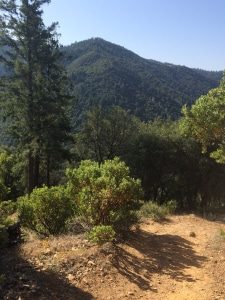 The run would consist of descending to the American River, running along its edge to the Rucky Chucky River Crossing. We would then hike 2 miles up to the lunch and bus transport area, a total of 18 miles. In my mind, it was a short and manageable day. I figured the run would be over in three to four hours. The thought gave me a boost of energy and eased the anxious feelings of my legs holding up.
The run would consist of descending to the American River, running along its edge to the Rucky Chucky River Crossing. We would then hike 2 miles up to the lunch and bus transport area, a total of 18 miles. In my mind, it was a short and manageable day. I figured the run would be over in three to four hours. The thought gave me a boost of energy and eased the anxious feelings of my legs holding up.
As I started to run on the paved streets of Foresthill, I could feel my quads tensing with each foot strike. I took it slow as we made the left-hand turn onto California Street and then proceeded on the single-track dirt trail. A series of switchback descents over the first 2.5 miles testing the strength in my quads. I worked to block out the discomfort and focus on my pace staying under control.
After descending 1,200 feet, the trail began to play tricks on me. The trail would be relatively flat, then all of a sudden there would be a short steep climb. I would be running along at a 9:30-10:30/mile pace, then all of sudden be thrown into a power-hike for several minutes. Not knowing exactly how long each climb was going to be, I was very hesitant to run any of them. I did, however, seem to have more strength and rhythm in my legs today when climbing. The feeling gave me confidence that I was running within my means. The first aid station came at mile 8, and by then, I had already gone through one bottle of Tailwind and one bottle of water. It was expected to be over 90 degrees today, so I kept focused on my hydration.
Peachstone to the Rucky Chucky
Much of the trail after this first aid station would stay right along the banks of the American River. Nearly all of it was in direct sunlight. With this knowledge, I elected to fill my handheld with Tailwind and my other two bottles of water. More water on board meant that I would have some to use to cool myself off. It was another 8 miles to the end of the day, which was a long stretch to go in the heat.
Around mile 9.5, the trail had come down almost right next to the American River. I again thought that it was going to be an easy run from here to the finish. Unfortunately, there were a few more short climbs just long enough to take me out of my rhythm. I worked hard to stay consistent and take in my surroundings. My goal during the actual race will be to traverse this section of the trail still in daylight. So paying attention to landmarks today would mean I could better attack the trail during the race. As I ran, I thought about how I could make up a lot of time on race day through this section if I had energy. This would help to take some pressure off of pushing too hard in the first 62 miles.
I reached the endpoint for the day, Rucky Chucky, at mile 16 in 2.75 hours (10:30/mile). My legs and body did not feel as tired as they did at the end of the previous day. I relaxed in the American River for about 30 minutes before filling all my bottles. It was another steep 2-mile climb up to Drivers Flat and the official stopping point for the day. I hiked up with Hoka One One athlete Sage Canaday and two other runners.
For close to 40 minutes we chatted about beers, trail experiences, places we had lived, and more. We all briefly split up at the top but ended up back together in the shade to eat lunch. Sage joined me once again on the bus ride back to the elementary school. We discussed my four-hundred-mile finishes to date and how we were both, to a great extent, experiencing the WS100 trail for the first time. Sage had never been on the trail. While I had only been on small sections towards the end at night time. Sage was just another ultra-runner. Chatting with him reminded me so much why I loved participating in the sport of running over any other.
Race Projections
I ran strong today and would figure that I can cover this section of trail during the race (miles 62-78) in the same 2.75 hours as today if my stomach and legs are still there. There were plenty of places where I could have run harder, and most of the climbs would have been manageable at a slow jog or a 100-stride run/25-stride walk strategy. For my race planning, this section in the race will be listed as Foresthill to Green Gate (mile 62-79.8) to include the climb out of the river. Keeping my approach more conservative, I am giving myself 4 to 5 hours to cover the 17.8 miles. Total race time between 16.5-19.5 hours and still very much on goal for a sub-24 hour finish.
The Western States 100 Training Camp – Day 3 – Run In (1.25-miles) and Green Gate (79.8) to Finish (100.2)
The remainder of Sunday afternoon went by much smoother than Saturday. I had more of an appetite and slept better throughout the night. When I awoke on Monday morning, my legs were sore. However, I knew that the feeling would dissipate once I started running. For the final day of the training camp, we would cover close to 22 miles of trail. Runners would be bused from the finish line at Placer High School in Auburn to an area just outside of the Green Gate. The start time was later today as well. So again, I took my time eating breakfast, preparing for the run, and checking out of the hotel.
After two long days of running in the heat, this final day would test how well I rehydrated each day. Every day of the camp, I woke up about three hours before the start time. I used this time to immediately drink a bottle of caffeinated Tailwind. After this first bottle of Tailwind, I then drank a non-caffeinated Tailwind serving over the next couple of hours and aimed to put in between 300-500 calories of solid calories (English muffin, bacon, eggs, etc.).
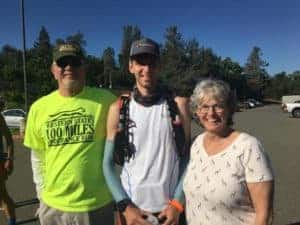 I arrived at Placer High School stadium a little before 8:00 AM. Shortly after arriving, I met with my mother-in-law and father-in-law, Irene and Dave, and a family friend, Suzanne. Suzanne lived close by and joined us last year when I participated in Tahoe Rim Trail 100. Dave and Irene had made the drive up to Auburn from Modesto early in the morning. They were there to help drive my car back to Modesto after the run so that I could rest. We talked about how the weekend had gone so far and made a plan for the three of them to meet me at Hwy 49. I was not sure how well this would work out, but they wanted to see me on the actual run. So I humored them a bit.
I arrived at Placer High School stadium a little before 8:00 AM. Shortly after arriving, I met with my mother-in-law and father-in-law, Irene and Dave, and a family friend, Suzanne. Suzanne lived close by and joined us last year when I participated in Tahoe Rim Trail 100. Dave and Irene had made the drive up to Auburn from Modesto early in the morning. They were there to help drive my car back to Modesto after the run so that I could rest. We talked about how the weekend had gone so far and made a plan for the three of them to meet me at Hwy 49. I was not sure how well this would work out, but they wanted to see me on the actual run. So I humored them a bit.
At a little past 8:30 AM, I loaded onto a school bus for the ride up to Green Gate. Temperatures were already in the high 70s. It was warming up quickly. If I were still on goal pace during the race, this section of trail would be at night in cooler temperatures. The added heat training, however, was more than welcome to help my body adapt. The bus ride felt like it went on forever, but at last, we arrived at the drop-off point.
Most runners, including myself, were a bit slower to get going this morning. I found myself walking the first quarter mile downhill on the dirt road. I was just trying to loosen up more before breaking into a run. We had a 1.25-mile traverse of a dirt road before we hung a left on the Western States trail to officially start the course preview for the day.
The first section of the trail followed gently undulating terrain through Auburn Lake Trails and Brown’s Bar. I ran with ease, keeping steady between 9:30-10:15/mile pace. I elected to run mostly by myself. This way, I could focus and avoid the very quick pace of some groups and the somewhat meandering pace of others. While it was going to be a 90+ degree day in Auburn today, the trail stayed mostly in the shade of the mountains. This combined with a few small areas of water to cool off kept me from feeling overheated.
I continued with my strategy from the previous day of one handheld Tailwind and two bottles of water. Carrying more water so that I could have some to use to spray myself to keep cool. With aid stations every 3 to 6 miles during the race, I would not be worried about running out. It was also helping to form a stronger habit of drinking more in the heat.
After passing through what would be the Brown’s Bar station, mile 10, the course dropped down to the American River. It is only about a 500-foot decline over 2 miles. However, the long gradual descent was tricky to navigate on tired legs. Having run 50+ miles the previous two days, my body experienced a great feel for what this descent would be like on race day. I knew if there was anything left in my legs during the race, I would be able to cruise down this descent. Thus, making up valuable time on my overall goal. With the knowledge of the trail from previous pacing duties, I now started to push a little harder.
At mile 12, I reached the first of two aid stations completely out of fluids. As my bottles were being refilled, I chatted with the volunteers and snacked on some watermelon and blueberries. The next mile of trail was fairly flat. Taking advantage of the course, I continued with the harder pace that had brought me to the station.
Next, there was a bit of a tricky one-mile climb up to the Highway 49 trail crossing. Similar to the climbs along the Day 2 section of the trail, this was not a very long or steep climb. However, it was just steep enough to knock me out of my rhythm. I knew that my in-laws and Suzanne were going to meet me at Highway 49. This gave me some extra motivation to power through the climb. On race day, Highway 49 aid station would also be a planned crew stop. Their presence was sure to be a motivator to reach this point quickly, just 7 miles from the finish.
HWY 49 to the Track
Arriving at the Highway 49 crossing, I was expecting to see Dave, Irene, and Suzanne waiting for me. Unfortunately, with limited parking, they had to wait down the road in the city of Cool. I gave them a call to let them know I had arrived. I felt excellent and wanted to keep going to finish off the day. However, they had gotten up early to drive to Auburn just for me, so I elected to wait. Even though I didn’t need any supplies, I humored them by topping off my water and taking a few orange slices.
The trail out of Highway 49 climbed slightly more to a large meadow. Then, the course began another long steady descent to No Hands Bridge. A 1,000-foot drop over 2.5 miles, the descent to No Hands Bridge sent trimmers through my quads. This section of trail could be used to make up time if your legs could still take the pounding. Today, I held back slightly to make sure I had the energy for the final climb to Robie Point.
It was only six miles from the last aid station. However, once again I had depleted all my fluids by the time I reached No Hands Bridge. I spent a few extra minutes here cooling off with cold sponges. At this point, the sun was directly overhead. This was something that I hoped would not be here on race day. Today, though, I wasted a few minutes to make sure I was completely ready to tackle the last few miles into Auburn.
As I began the final section of the trail to the finish, I joined up with another runner that I had chatted with at the start. He was commenting on how much this final climb was going to hurt. Saying that the climb was one that would take a long time on race day. I quickly re-directed his thoughts, though. To me, this last climb was a victory march. At the top of the climb was Robie Point, and about a mile from there was the finish.
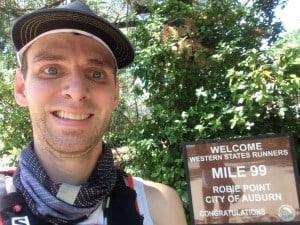 If you make it to No Hands Bridge, the victory is in hand! However, I have seen people drop from mile 97 and 99 or fall behind the cut-off. From this point, it’s all in your head. Leaving No Hands Bridge begins the celebration point of finishing the Western States 100 Mile Endurance Run. Even if the course is still trying to derail your accomplishment with one more climb, you just have to keep going.
If you make it to No Hands Bridge, the victory is in hand! However, I have seen people drop from mile 97 and 99 or fall behind the cut-off. From this point, it’s all in your head. Leaving No Hands Bridge begins the celebration point of finishing the Western States 100 Mile Endurance Run. Even if the course is still trying to derail your accomplishment with one more climb, you just have to keep going.
This positive mindset pushed me up the final climb. Just a short run on the paved streets of Auburn, and I arrived at the finish outside Placer High Track. To prevent any bad omens, we did not run the lap around the track as we would on race day. Once again, there was a great setup of food and drinks for runners to enjoy after the run. Dave and Irene meet me there as well with a Peanut Butter and Chocolate Jamba Juice, which was very refreshing.
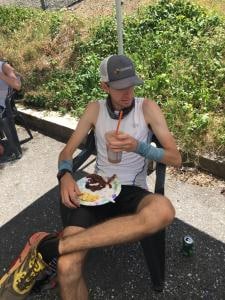 Race Projections
Race Projections
My legs have been trashed by 70+ miles of running. My body has been beaten down by the heat. However, I am confident that this section of trail will take me about 4-5 hours on race day. I am notorious for strong finishes in 100 miles. Somehow I always reach a point where there is no more possible accumulation of pain. I find myself filled with a burning desire to push hard to the finish. I have now run the final 20 miles of trail three times. The experience on this section will be of great benefit on race day.



